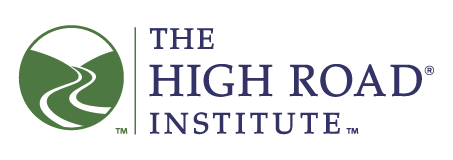Nearly every leader shares this concern: ‘how do I obtain and keep my employees engaged?’
While it can be difficult to obtain engagement if it does not already exist, if you as a leader work on it every day, soon your employees will be better contributors and stay loyal.
Here is a summary of an overall strategy that you can use to get every employee engaged. Study it to recognize what you are already doing and incorporate these practices that you are missing.
Step #1 – Define Professionalism for Everyone
Employees do not know how to be professional unless you define it for them. Without this clarification, members of your team will revert to their predefined image of what a professional looks like and acts like.
As you explain what professionalism looks like, be sure to emphasize these two Principles of Employee Engagement:
Emphasis #1 – Being professional is an attitude, not a set of competencies.
Emphasis #2 – Professional is a label ONLY given to you by those you serve.
Step #2 – Instill the Attitudes of a Professional
Once you have everyone’s attention on the need to be perceived as professional by the people your team serves, get them to examine their own attitudes. You will likely need to coach team members in areas where their existing perspective needs to be elevated.
Attitudes of a true professional include:
Commitment to the organization’s success
Objectivity
Timeliness and urgency
Self-awareness and introspection
Assertiveness
Solution orientation
Seeking the big picture view
Accountability
A shared belief that “communication is critical”
Step #3 – Hold Regular Training Sessions on Key Skills
While employees work on fine tuning their attitudes, commence ongoing training sessions in key areas for team and individual success. Identify employees who exceed expectations in these skills and ask them to lead the training and assist you in coaching employees who have yet to master the skill.
This training needs to be both formal and informal. For example, if you hold regular staff/team meetings, include an educational component to the agenda. In your regular coaching sessions that you hold with each employee, include a role playing segment to enhance a new skill.
The skills to be covered in ongoing training include:
Communication
Assertiveness
Customer service
Problem solving
Teamwork and interdependence
Giving and receiving feedback
Priority management
Holding each other accountable
Meeting deadlines and commitments
Notice that these skills work to support the attitudes of a professional.
Step #4 – Set a Measurable Goal and Measure the Improvements
Spend the next 6 months on this and your team will soon be amazing!
Notice the improvements and comment on what you see. Obtain feedback from your team’s customers and share it with team members. Celebrate individual and team growth.
Then, develop a plan for the next six months on additional attitudes and skills to enhance.
You can do it. Make it so!

